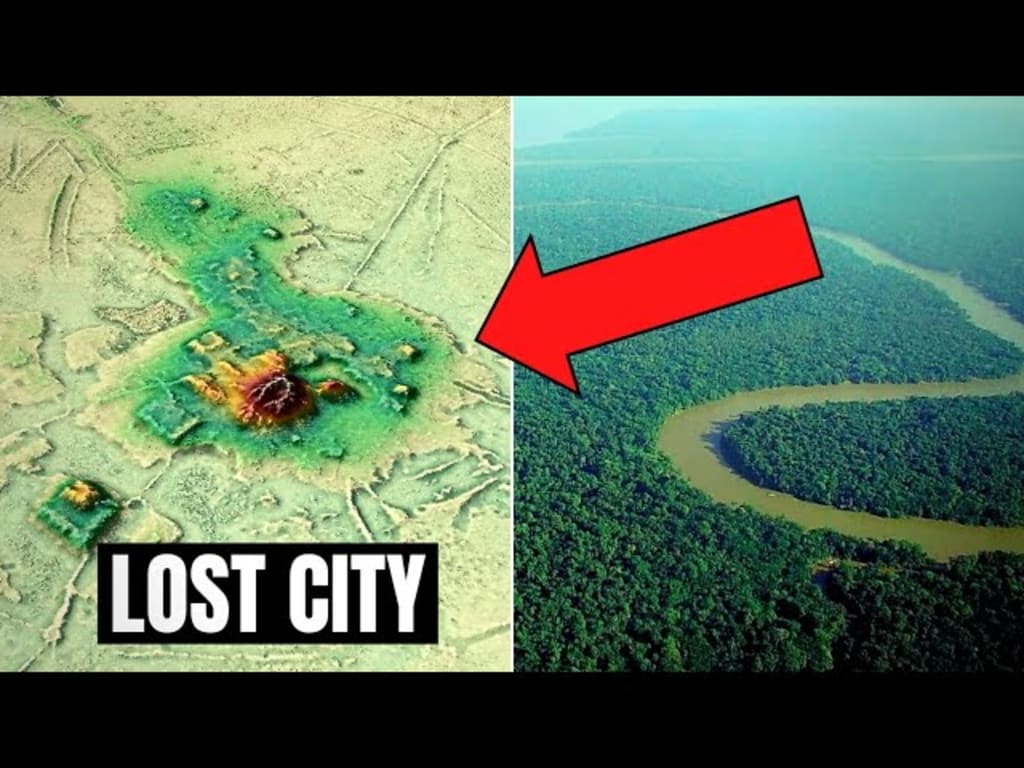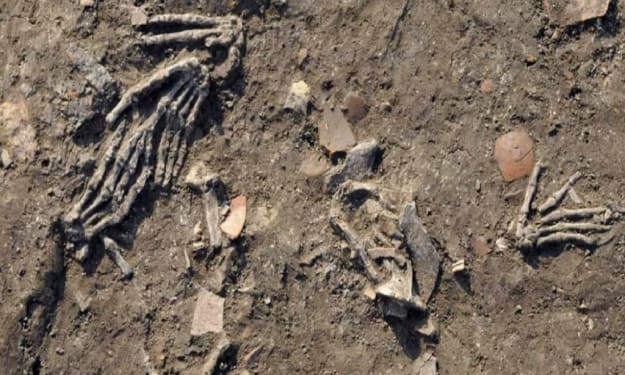Unveiling the Hidden Civilizations of the Amazon: Exploring the Lost Cities
The Lost Cities of the Amazon: Unveiling the Mysteries of a Hidden Civilization

## The Lost Cities of the Amazon: Unveiling the Mysteries of a Hidden Civilization
For centuries, the Amazon rainforest has captivated the imagination of explorers, scientists, and historians alike. Vast, impenetrable, and teeming with life, it is often referred to as the "lungs of the Earth" due to its immense biodiversity and the critical role it plays in regulating the global climate. Yet, beneath its dense canopy lies a mystery that has puzzled and intrigued researchers for decades: the existence of lost cities and civilizations that once thrived in this seemingly inhospitable environment.
### The Legend of El Dorado
The allure of the Amazon's lost cities is perhaps most famously embodied in the legend of El Dorado. This mythical city, said to be rich in gold and other treasures, has lured countless explorers into the depths of the jungle. The legend began with the story of a tribal chief who would cover himself in gold dust and dive into a lake as part of a ritual. Over time, the tale evolved, and El Dorado became synonymous with an entire city of gold.
While El Dorado itself remains elusive, the search for it has led to the discovery of numerous other significant archaeological sites within the Amazon basin. These findings suggest that the rainforest was once home to advanced and complex societies that managed to thrive in an environment that modern science still struggles to fully understand.
### Early European Encounters
The first European explorers to venture into the Amazon reported encounters with large, organized settlements. Francisco de Orellana, who navigated the Amazon River in the 1540s, described densely populated villages and towns with sophisticated agricultural practices. His accounts were initially met with skepticism, as they contradicted the prevailing belief that the Amazon was a pristine wilderness untouched by human hands.
However, recent archaeological discoveries have vindicated Orellana's observations. Researchers have unearthed evidence of extensive terraforming, including raised fields, fish ponds, and intricate road networks. These findings suggest that the indigenous peoples of the Amazon developed innovative techniques to manage and sustain large populations, challenging the notion that the rainforest could not support complex societies.
### The Role of Terra Preta
One of the most fascinating aspects of Amazonian civilization is the creation and use of terra preta, or "black earth." This highly fertile soil is characterized by its dark color and rich organic content, making it ideal for agriculture. Unlike the nutrient-poor soils typically found in tropical rainforests, terra preta retains its fertility for long periods, allowing for sustained cultivation.
Researchers believe that terra preta was created intentionally by ancient Amazonian communities through a process known as biochar. By adding charcoal, bone, and organic waste to the soil, these communities enhanced its fertility and productivity. This discovery has significant implications for modern agriculture, as biochar techniques could potentially improve soil health and carbon sequestration on a global scale.
### The Geoglyphs of Acre
In the Brazilian state of Acre, near the border with Bolivia, a series of remarkable geoglyphs have been discovered. These large, geometric earthworks, visible from the air, consist of interconnected circles, squares, and other shapes. First identified in the 1970s, the geoglyphs have since been attributed to the ancient peoples of the Amazon, who constructed them between 2000 and 1000 years ago.
The purpose of these geoglyphs remains a subject of debate among archaeologists. Some believe they served ceremonial or ritualistic functions, while others suggest they may have been used for astronomical observations or territorial markers. Regardless of their original purpose, the geoglyphs of Acre provide compelling evidence of sophisticated social organization and cultural expression among the ancient inhabitants of the Amazon.
### The Xingu Region and Kuhikugu
One of the most significant archaeological discoveries in the Amazon is the ancient settlement complex known as Kuhikugu, located in the Xingu region of Brazil. Excavated by archaeologist Michael Heckenberger and his team, Kuhikugu consists of a network of interconnected villages, towns, and ceremonial centers, covering an area of over 20,000 square kilometers.
The settlement's layout reveals a high degree of planning and engineering. Roads and causeways link the various sites, while large plazas and defensive structures indicate the presence of a centralized authority. Evidence of advanced agricultural practices, including raised fields and fish farming, further underscores the ingenuity of the ancient Xingu people.
Heckenberger's research challenges the long-held assumption that the Amazon was a sparsely populated wilderness before the arrival of Europeans. Instead, it paints a picture of a vibrant and dynamic civilization capable of supporting large, interconnected communities.
### The Role of LiDAR in Uncovering Lost Cities
Recent advancements in technology have revolutionized the field of archaeology, particularly the use of Light Detection and Ranging (LiDAR) systems. By emitting laser pulses from aircraft and measuring their return times, LiDAR can create detailed topographical maps of the Earth's surface, even through dense vegetation.
In the Amazon, LiDAR has revealed the remnants of ancient structures and landscapes that were previously hidden by the forest canopy. These discoveries have provided new insights into the scale and complexity of Amazonian civilizations. For example, in the Bolivian Amazon, LiDAR has uncovered extensive networks of causeways, canals, and reservoirs, suggesting the existence of a highly organized society capable of managing water resources on a large scale.
### The Challenges of Amazonian Archaeology
Despite these remarkable discoveries, the study of Amazonian archaeology faces significant challenges. The region's dense vegetation, remote location, and harsh climate make fieldwork difficult and expensive. Additionally, the rapid deforestation of the Amazon threatens to destroy countless archaeological sites before they can be studied and preserved.
Furthermore, the history of indigenous peoples in the Amazon is often overlooked or marginalized in mainstream narratives. Many of the region's oral traditions and cultural practices have been lost due to centuries of colonization, disease, and displacement. Efforts to document and preserve indigenous knowledge are crucial for understanding the full scope of Amazonian history and ensuring that the voices of its original inhabitants are heard.
### The Significance of Amazonian Civilizations
The discovery of lost cities and ancient civilizations in the Amazon has profound implications for our understanding of human history. These findings challenge the notion that complex societies could only develop in certain environments, such as the fertile river valleys of Mesopotamia or the temperate climates of Europe and Asia. Instead, they highlight the adaptability and ingenuity of human beings in creating sustainable communities in diverse and challenging ecosystems.
Moreover, the study of Amazonian civilizations offers valuable lessons for contemporary society. The ancient techniques used to create terra preta and manage water resources could provide innovative solutions to modern agricultural and environmental challenges. By learning from the past, we can develop more sustainable practices that benefit both people and the planet.
### Conclusion
The lost cities of the Amazon are a testament to the resilience and creativity of human societies. Far from being an uninhabited wilderness, the rainforest was once home to thriving civilizations that mastered their environment and developed complex social, agricultural, and engineering systems. Through the combined efforts of archaeologists, indigenous communities, and modern technology, we are gradually uncovering the rich and diverse history of the Amazon and gaining a deeper appreciation for the ingenuity of its ancient inhabitants.
As we continue to explore and understand this remarkable region, we are reminded of the importance of preserving its natural and cultural heritage for future generations. The Amazon rainforest is not only a vital ecological resource but also a living testament to the enduring legacy of human civilization.
About the Creator
Enjoyed the story? Support the Creator.
Subscribe for free to receive all their stories in your feed. You could also pledge your support or give them a one-off tip, letting them know you appreciate their work.





Comments (1)
A brilliant history work.